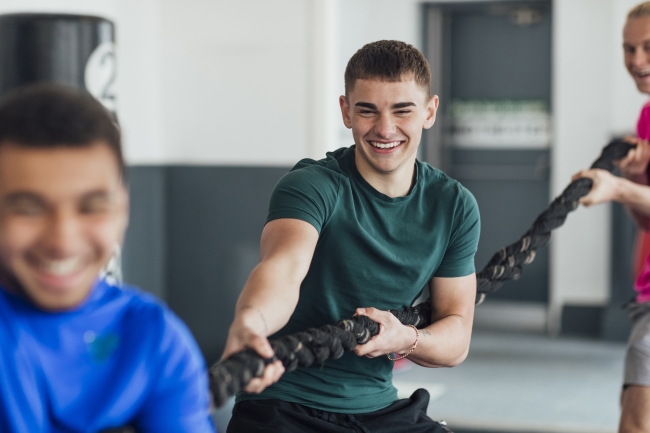You have /5 articles left.
Sign up for a free account or log in.

Colleges and universities encourage students to prioritize their physical health.
SolStock/E+/Getty Images
Physical activity can have an impact on a person’s mental health, and students are no exception: one study found students with higher total physical activity were more likely to have better mental health. A 2023 Student Voice survey found half of college students say their physical health and wellness negatively impact their ability to focus, learn or do well in school, somewhat or a great deal.
Colleges and universities can encourage students to be active through support measures including peer education programs, wellness apps and curriculum around physical activity.
Peer accountability: Peer fitness programs can also encourage students to be active with their classmates and friends, promoting belonging and community as well as physical wellness.
Kinesiology students at Michigan State University serve as physical activity mentors to their peers, teaching them how to develop fitness goals and habits. After completing an intake, students determine how long they want to work alongside their mentor, virtually or in person, toward achieving a physical activity goal. The program is designed to get students moving and build their confidence to engage in fitness on their own or in a social situation.
The University of Oregon’s Physical Education and Recreation Department offers well-being coaching from peer coaches who are certified and want to uplift and educate others at the university. Oregon’s coaches also serve as referral coordinators for students looking to get connected to the various services, including remedies for food insecurity and mental health concerns.
Fitness applications: While there are many apps on the market that allow students to track and engage in fitness activities, some institutions have connected apps to their recreational offerings on campus.
For example, the University of North Dakota has a designated wellness mobile app connected to its fitness center, giving students easy access to sign their waiver, scan into the center and gauge facility capacity at a given time. The app also highlights programming at the center, allowing students to sign up for exercise classes or participate in a remote program online.
The University of Iowa’s app, similarly, offers facility hours, group fitness schedules and a digital barcode, and it also includes intramural sports information.
Physical fitness curriculum: Academic courses can also benefit students’ fitness knowledge and applied skills. Students at Spelman College are required to complete a physical activity course to highlight the importance of fitness and healthy eating habits.
Courses include boxing, cardio conditioning, tai chi, tennis, walking and jogging, swimming, self-defense, cycling, and yoga. Administrators say they hope to address health disparities in the African American community by educating the next generation on habits that can help them feel their best.
Do you have a wellness tip that might help others encourage student success? Tell us about it.




